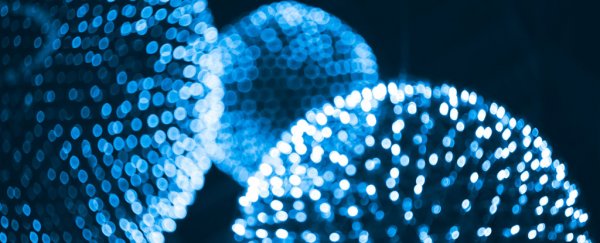Two physicists at the Swiss Federal Institute of Technology were able to create diatomic molecules the size of bacteria - like E. coli, for example - proving hypothesis about such molecules were correct.
Diatomic molecules, such as H2H2 or O2O2, typically come in a size that is less than 1 nanometre across.
But in a paper published in Physical Review Letters, scientists Johannes Deiglmayr and Heiner Saßmannshausen described how they were able to create two-atom molecules that are 1 micrometre in size - 1,000 times the size of a typical molecule - using exotic atoms that attract one another very weakly.
Previous research has shown that giant, two-atom molecules can be created if the atoms are put in a Rydberg state - in which the outer electron is boosted to a high quantum state, allowing it to orbit far from the atom's nucleus.
For this new effort, the two physicists chilled two caesium atoms to nearly absolute zero temperature, which they then bound using a pulse of laser light to excite a small fraction of the atoms.
 In this sketch, two caesium atoms in high Rydberg states form a weakly bound molecule about 1 micrometre across. Credit: APS/Alan Stonebraker
In this sketch, two caesium atoms in high Rydberg states form a weakly bound molecule about 1 micrometre across. Credit: APS/Alan Stonebraker
Another pulse of light followed - but this time only with a smaller amount of energy - just enough to put the atoms into a Rydberg state.
To make sure that had succeeded, the pair tried to detect the ions created when one of the atoms decayed to the lower Rydberg state. The physicists said the result of their experiment may have a place in quantum computers that use atoms as quantum bits.
"Before, maybe it wasn't clear if this is really a molecule in the sense that it's vibrating and rotating. It could have been just two atoms sitting there with very weak interactions or no interactions," said Deiglmayr.
This article was originally published by Futurism. Read the original article.
